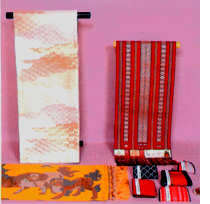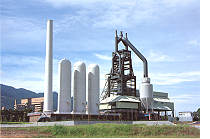Kyushu-Okinawa Summit 2000
Outline of Kyushu-Okinawa Summit Meeting

![]()
![]()
 Kurume Splashed-pattern Kimono |
The production of commercial products such as Hakata Weaving, Kurume splashed-pattern Kimono and Kokura Weaving became prevalent during the 17th century. Many roads and ports as well as the area's river transport system developed during this time. Fukuoka became dominant as an important transportation base of Kyushu. |
![]()
 Yawata Iron and Steel Works |
After the Meiji Restoration of 1868, a government-run steel mill opened in 1901 in Yawata (present day Yahata, Kitakyushu). The rise of the steel industry helped advance industrialization, and Fukuoka became one of Japan's four major industrial centers. |
![]()
In order to expedite recovery after World War II, the Japanese government adopted a policy of infusing funds and raw materials to specified industries such as coal and steel. The Korean War also brought about an economic boom, and Fukuoka was quickly rebuilt from ruins. During the period of high economic growth beginning in the late 1950s, the mining industry also achieved major growth. In recent days, the enrichment of international exchange functions, including the successive introduction of new, regularly scheduled international flight services, is helping Fukuoka develop further as an international city.
 |
 |
Back to Index
